Turner at 250: The Best Anniversary Exhibitions
The year 2025 marks the 250th anniversary of the birth of Joseph Mallord William Turner, arguably Britain’s greatest landscape painter.
Catriona Miller 13 February 2025
Recently Rijksmuseum announced an acquisition of a highly sought-after newly emerged work by a Dutch Golden Age artist, Gesina ter Borch. This remarkable painting was recently discovered in France by an art dealer from Amsterdam and in the last weeks was presented at TEFAF, a prestigious art fair in Maastricht in the Netherlands. The exciting announcement was made just before International Women’s Day, thus contributing to the celebratory mood in the museum world which every day strives to make a change in the representation of women in the art world.
Let’s dive into the history behind this special painting and its special author!
Gesina ter Borch (1631–1690) was born in Zwolle, Netherlands, to a prominent family with a rich artistic lineage. Her father, Gerard ter Borch the Elder, a painter with training in Italy, instilled artistic passion in his daughter. However, it was her half-brother, Gerard ter Borch II, who gained widespread recognition as the family’s most celebrated artist. As a young girl, Ter Borch honed her skills under her father’s guidance and frequently served as a model for her brother.
Gesina ter Borch, primarily known for her mastery of watercolors, left behind three remarkable albums, along with a substantial collection of drawings. Until now, she was known to have completed only one oil painting in collaboration with her brother Gerard, a portrayal of her beloved younger brother Moses, who tragically passed away at the age of 19, during the Second Anglo-Dutch War. The painting is signed by her brother, Gerard, and is also owned by the Rijksmuseum.
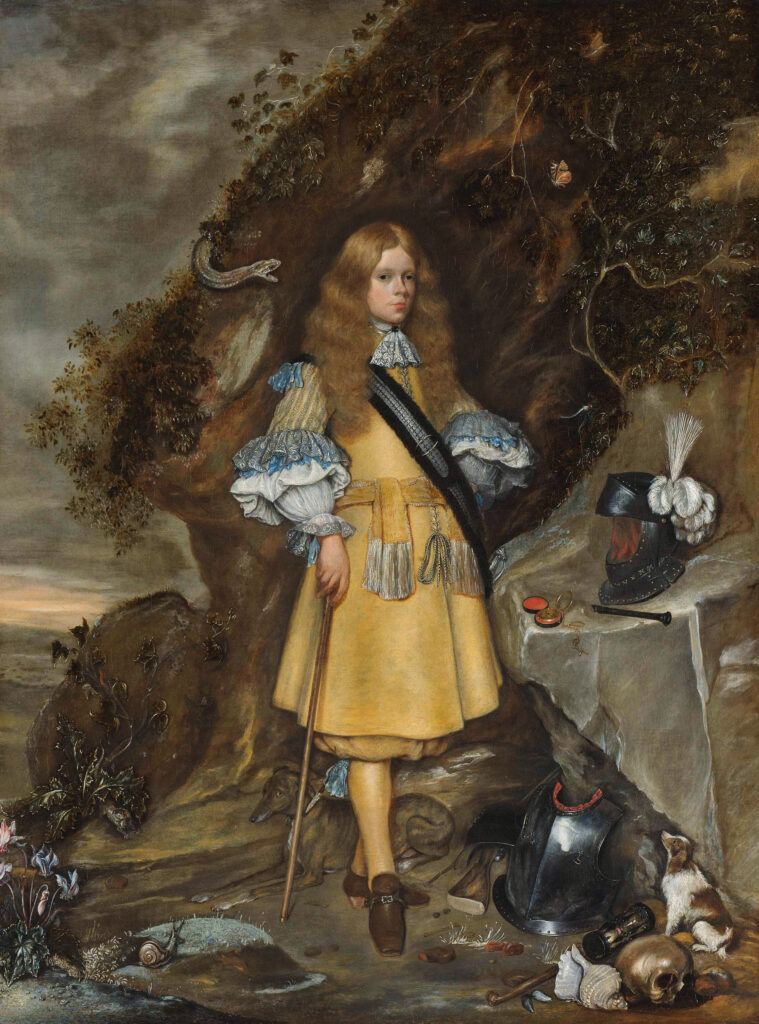
Gesina ter Borch and Gerard ter Borch, Memorial Portrait of Moses ter Borch, 1667-1669, Rijksmuseum, Amsterdam, Netherlands.
The acquired painting is a posthumous full-length portrait of Gesina ter Borch’s younger brother Moses as a two-year-old dressed in a decorative costume with ribbons which helped the specialists to determine the possible date of execution to be after 1667, despite what seems to be an erroneous annotation on the upper left stating the date 1647 (as shown below, the annotation reads: A: i647. Ætatis. Sua. 2.).
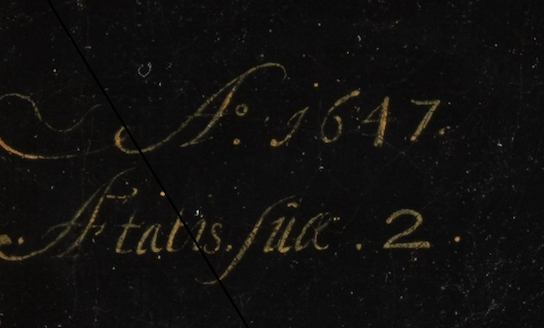
Gesina ter Borch, Portrait of Moses ter Borch as a Two Year Old, after 1667, Rijksmuseum, Amsterdam, Netherlands. Detail.
Little Moses is depicted beating a children’s drum with his toys spread around him. On the left, there is a black horse on wheels with a small horsewhip lying on the floor. In the right lower corner we can see a flute, a violin, and a long stick with ribbons attached to it. It seems to be a simple children’s portrait, however, other small details, such as a golden coin suspended from a golden chain or an orange flag, reveal iconography referring to the House of Oranje-Nassau, a Dutch equivalent of the royal family.
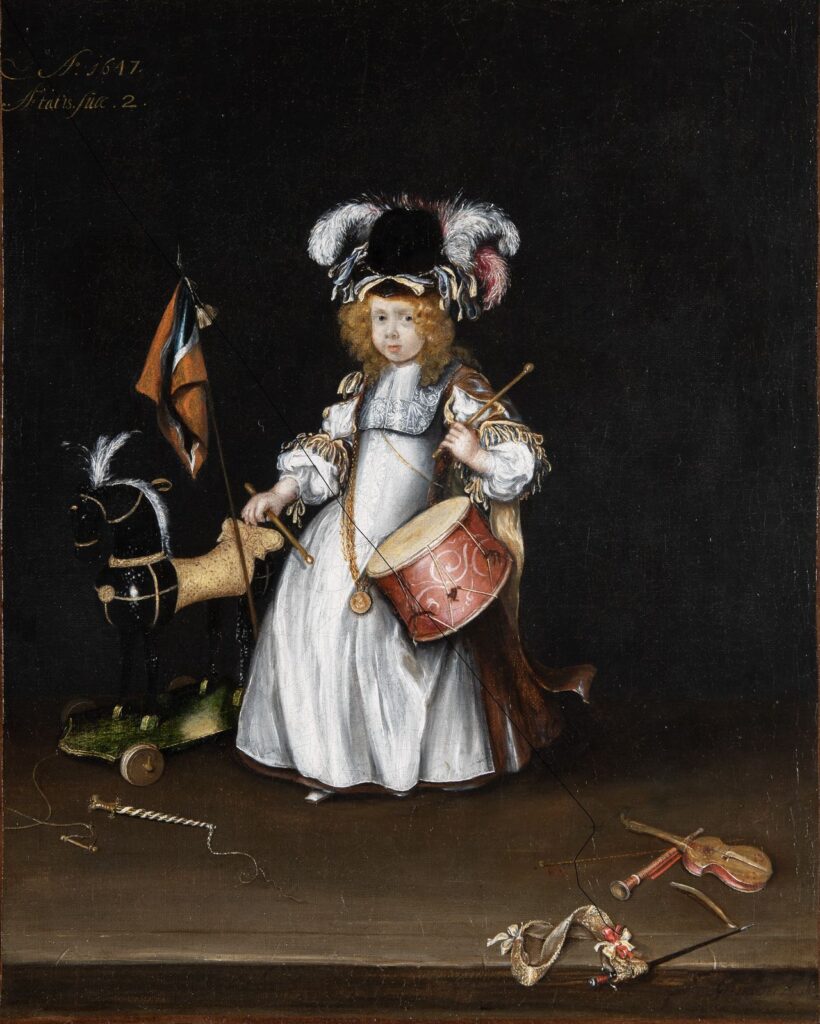
Gesina ter Borch, Portrait of Moses ter Borch as a Two Year Old, after 1667, Rijksmuseum, Amsterdam, Netherlands.
This remarkable work is now the only oil painting to be signed by Gesina ter Borch. It was discovered in a private collection in Paris by a Dutch gallerist, Dickie Zebregs of Zebregs & Röell, a gallery based in Amsterdam and Maastricht. The Rijksmuseum bought the painting for €3 million with the generous support of the Women of the Rijksmuseum Fund.
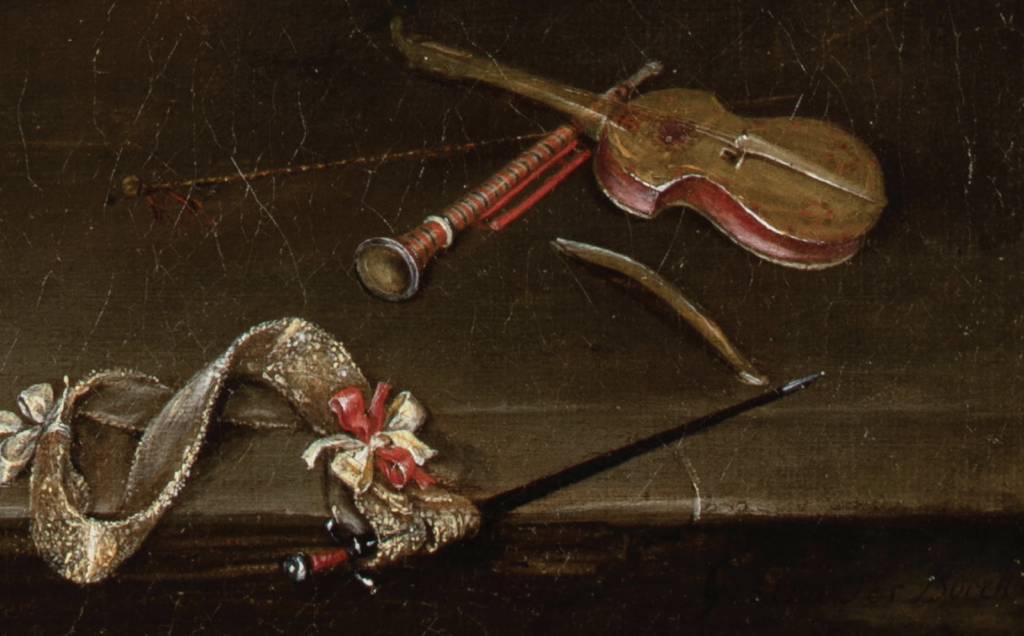
The signature is very faintly visible in the lower right corner. Gesina ter Borch, Portrait of Moses ter Borch as a Two Year Old, after 1667, Rijksmuseum, Amsterdam, Netherlands. Detail.
This was undoubtedly a significant purchase for the museum, as Gesina ter Borch is only among two other women to be featured in the Rijksmuseum’s Gallery of Honour.
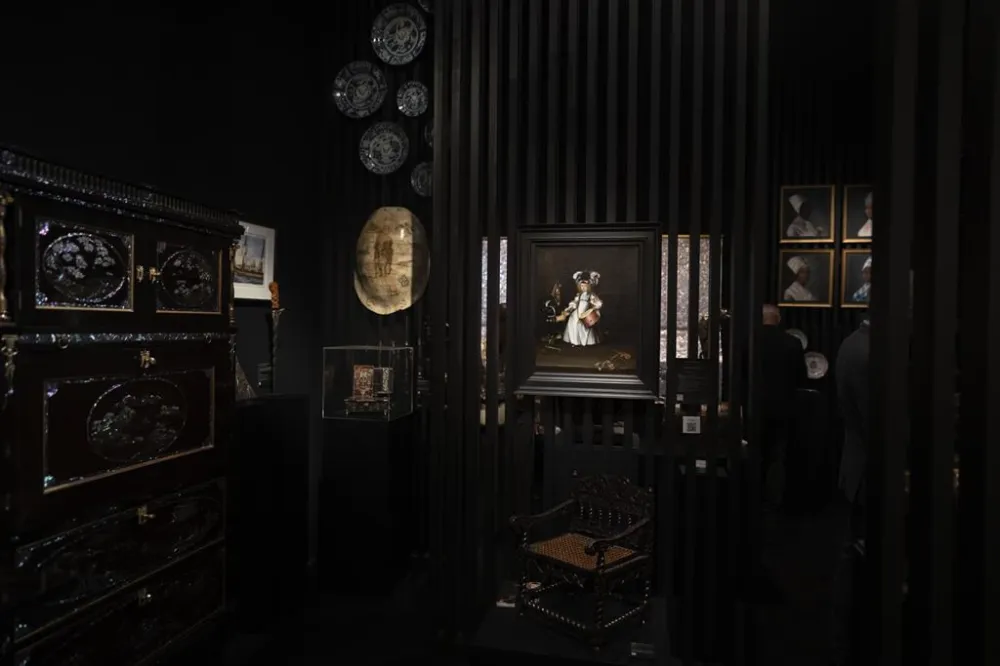
Gesina ter Borch, Portrait of Moses ter Borch as a Two Year Old, after 1667, at the Zebregs&Röell booth at TEFAF, Maastricht, Netherlands. Photo by AP/Peter Dejong.
DailyArt Magazine needs your support. Every contribution, however big or small, is very valuable for our future. Thanks to it, we will be able to sustain and grow the Magazine. Thank you for your help!